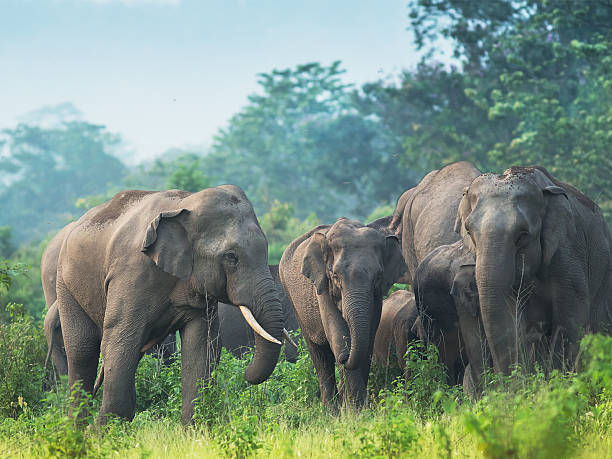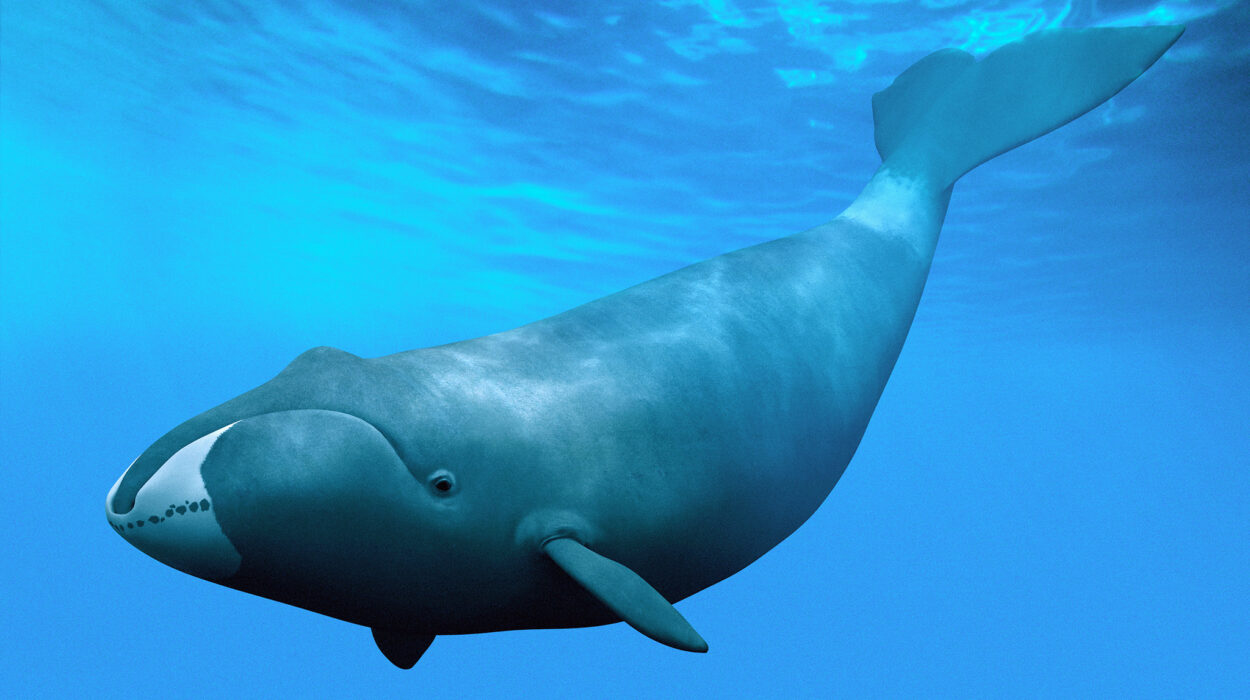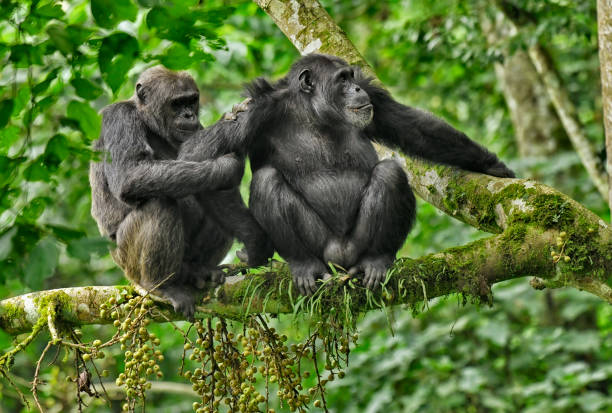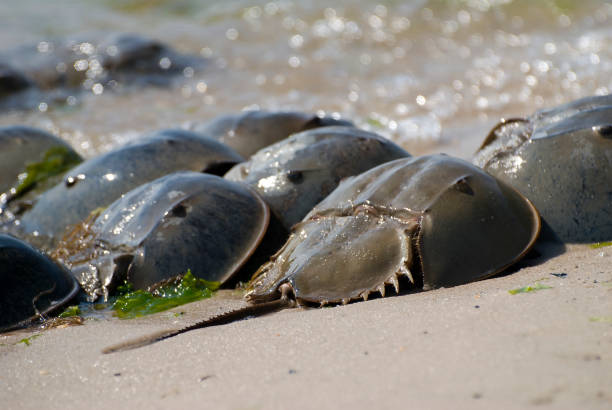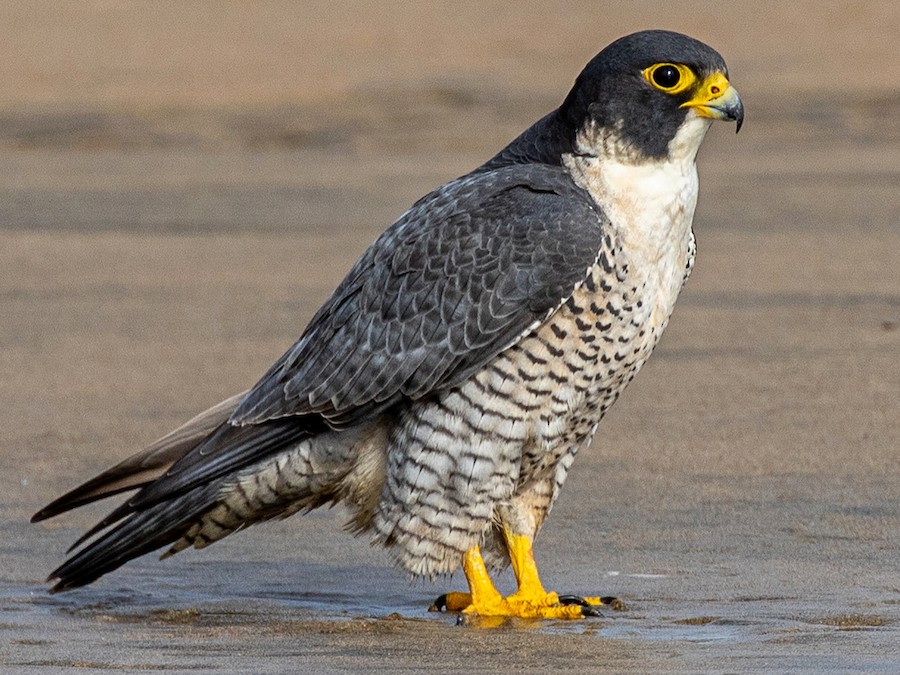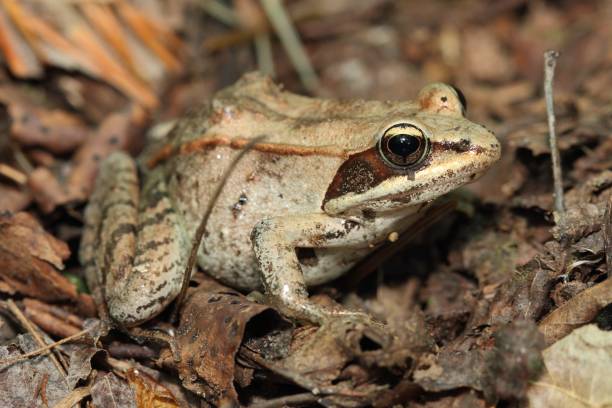For centuries, humans believed emotion was ours alone—a secret fire that made us different from the creatures around us. We thought animals lived by instinct, moving through life like clockwork, reacting but never truly feeling. Yet, the closer we look, the more that illusion falls away.
Modern science now tells a different story, one both humbling and beautiful: animals feel. They grieve, they love, they play, they fear, and they hope. Beneath fur, feathers, and scales lies a spectrum of emotions that rivals our own.
Neuroscientists have found that the brains of many animals share similar structures and chemical processes to ours. The amygdala, hippocampus, and prefrontal cortex—regions that govern emotion in humans—are also active in mammals, birds, and even some fish during emotionally charged experiences.
When a mother elephant touches the bones of her deceased child, or a crow lays down twigs beside a fallen companion, we are witnessing not instinct but empathy, not reaction but remembrance.
Let us journey through the animal kingdom and meet fifteen extraordinary creatures that reveal the emotional depths of life beyond humanity.
1. Elephants – The Empathetic Giants
Elephants are the emotional titans of the natural world. Their hearts beat in harmony with their herds, bound by deep family bonds and almost human-like grief.
When an elephant dies, the herd gathers around the body. They touch the fallen one’s face with their trunks, stand silently for hours, and sometimes cover the body with leaves or soil. This behavior is not survival—it is mourning.
Scientists have observed elephants returning to the bones of their dead years later, gently caressing the skulls as if remembering. Elephants also comfort one another. When a member is distressed, others rush in, touching and rumbling softly—a kind of elephant hug.
Their empathy stretches beyond their species. They’ve been seen rescuing trapped humans, protecting injured antelope, and displaying joy when reunited after separation.
Elephants remind us that intelligence and emotion are not human inventions but universal languages of life.
2. Dogs – The Devoted Companions
No creature on Earth embodies loyalty and love like a dog. Their emotional world intertwines with ours so completely that they can read our expressions, sense our moods, and even respond with empathy.
Dogs’ brains light up in similar ways to human brains when they see familiar faces or hear loving tones. Studies using MRI scans have shown that dogs experience a dopamine surge—the same chemical responsible for human joy—when reunited with their owners.
But dogs don’t only love; they grieve. Many have refused food or searched desperately for deceased companions. Their eyes reveal longing, sorrow, and pure devotion.
They celebrate our return, share our sadness, and comfort us without words. Dogs teach us that love needs no language, only presence.
3. Dolphins – The Joyful Intellects of the Sea
Beneath the ocean’s surface lives a society of thinkers and feelers—dolphins, whose emotional intelligence rivals our own.
Dolphins call each other by unique “names” in the form of signature whistles, maintain lifelong friendships, and mourn their dead. There are documented cases of dolphins carrying deceased calves for days, unwilling to let go.
They also show remarkable empathy toward other species. Dolphins have protected swimmers from sharks, guided lost whales to safety, and even comforted wounded animals.
Their playfulness—leaping, surfing waves, or blowing bubble rings—reveals not mere instinct but joy. Scientists believe this joy reflects self-awareness and a sense of humor.
Dolphins remind us that happiness, empathy, and grief swim deep in the waters of consciousness.
4. Crows – The Dark-Feathered Thinkers
Crows, with their sleek black feathers and piercing eyes, are among the most emotionally complex birds. Far from being cold or mechanical, crows form close bonds, hold funerals, and even seek revenge.
When a crow dies, others gather around the body in silence. They seem to investigate the cause of death, calling out and studying the scene. Some researchers believe this behavior is both mourning and learning—understanding threats to protect the flock.
Crows also recognize individual human faces and remember acts of kindness—or cruelty—for years. They have been seen bringing gifts to humans who feed them: shiny trinkets, bits of metal, and polished stones.
These gifts aren’t random; they’re tokens of gratitude. The emotional world of crows is full of curiosity, loyalty, and moral memory.
5. Cats – The Quiet Feelers
Cats are often misjudged as aloof or indifferent, but behind their composed gaze lies a subtle yet deep emotional world.
Domestic cats form powerful attachments to their humans. They show affection not always with wagging tails but through slow blinks, gentle head bumps, and following you from room to room.
Science confirms that cats feel love and anxiety similar to young children. In attachment tests, they show stress when their human leaves and calm when the person returns.
They also display jealousy, anger, and sadness—sometimes sulking or withdrawing when they feel ignored. A cat’s emotional language is quieter than a dog’s, but no less sincere.
Their affection is earned, not given, which makes it all the more profound.
6. Horses – The Emotional Mirrors
Horses are sensitive mirrors of the human soul. They can read facial expressions, detect stress, and respond to emotional tone faster than many people.
Their emotional sensitivity evolved through survival—living in herds required constant awareness of others’ moods. That same skill now bonds them with humans.
Studies show that horses can distinguish between happy and angry human faces, and they remember those emotions later. They also form lifelong friendships with other horses, greeting companions with gentle whinnies and nuzzles.
When separated from their partners, horses can become visibly distressed—calling out and pacing until they’re reunited.
Their empathy is so strong that equine-assisted therapy programs use horses to help people heal from trauma. Horses feel our emotions and return them with grace, trust, and understanding.
7. Rats – The Tiny Empaths
It may surprise you, but rats—those small, twitchy creatures often maligned by humans—are capable of astonishing empathy.
In controlled experiments, rats have been observed freeing trapped companions, even when food was offered as an alternative reward. They chose compassion over comfort.
When one rat is distressed, others show concern, grooming and staying close to calm their friend. They also express joy through ultrasonic chirps when tickled, a sound we can hear only with special equipment.
Their social structures are based on cooperation and emotional connection. To the untrained eye, they may look like simple rodents, but inside their tiny brains lives the same emotional spark that drives kindness and companionship.
8. Octopuses – The Emotional Enigmas
With three hearts, blue blood, and alien intelligence, octopuses are unlike any creature on Earth. Yet, beneath their alien form lies something profoundly familiar—emotion.
In aquariums, octopuses recognize individual keepers, squirting water playfully at those they like and retreating from those they don’t. They display curiosity, problem-solving, and even boredom.
In one famous case, an octopus named Otto was caught repeatedly throwing rocks at aquarium lights—apparently out of irritation. Others have escaped enclosures just to steal food or explore, then returned on their own.
Their color-changing skin reflects mood. Bright hues signal excitement or anger; soft tones express calm or contentment.
Though their lifespan is short, octopuses show that emotion and intelligence can evolve in even the most alien minds.
9. Primates – Our Emotional Reflections
Chimpanzees, bonobos, gorillas, and orangutans are our closest living relatives, sharing 98–99% of our DNA. It’s no surprise that their emotions mirror ours with haunting clarity.
Chimpanzees hug and kiss to reconcile after fights. Bonobos, known for their peaceful nature, use affection and intimacy to resolve conflict. Gorillas have been observed grieving for lost infants, carrying them for days in quiet sorrow.
One gorilla named Koko captured the world’s heart by communicating through sign language. When told that her beloved kitten had died, she signed “sad” and “cry.” Her grief was unmistakable.
These primates show joy, jealousy, empathy, and love. They laugh when tickled and rage when betrayed. In them, we see the evolutionary roots of our own hearts.
10. Pigs – The Emotional Intellects of the Farm
Pigs are among the most underestimated animals in terms of intelligence and emotion. They are smarter than dogs and as socially complex as chimpanzees.
Pigs form deep friendships, recognize themselves in mirrors, and experience a wide range of emotions—from excitement and affection to sadness and loneliness.
When separated from loved ones, pigs squeal in distress. They dream when they sleep, wag their tails when happy, and even respond to music.
Farmers who treat pigs as companions often report that they come when called, snuggle affectionately, and display remarkable understanding of human moods.
Pigs feel joy in play and sorrow in solitude. Their hearts beat with quiet, intelligent sensitivity—a reminder that emotion knows no boundaries of species or size.
11. Parrots – The Vocal Hearts
Parrots do not just mimic our words—they mirror our emotions. Their intelligence allows them to grasp meaning, tone, and social nuance in ways few animals can.
African Grey Parrots, like the famous Alex, have demonstrated comprehension of concepts like color, number, and emotion. When Alex was scolded, he sometimes sulked or asked for forgiveness.
Parrots form strong pair bonds and feel grief when their partners die. Some pluck their feathers in distress, a visible sign of depression. They also experience joy, excitement, and curiosity, expressing it through laughter-like sounds and dancing movements.
For parrots, speech is not imitation—it’s conversation, connection, and affection. Their emotional world is as colorful as their feathers.
12. Whales – The Singers of Sorrow and Joy
The songs of whales echo across the ocean, haunting and beautiful. Those melodies are not just communication—they are emotion turned into sound.
Whales form long-lasting family groups, called pods, where bonds can last a lifetime. When a member dies, the pod often gathers around the body, moving slowly and singing mournful tones.
Mothers have been observed carrying dead calves for days, even weeks, their grief palpable. Scientists believe these displays mirror human mourning rituals—acts of love and remembrance.
Whales also show exuberant joy, breaching and playing in the surf. They share care for young, comfort one another, and coordinate in complex cooperation.
Their songs remind us that emotion can travel through water, as ancient and eternal as the sea itself.
13. Penguins – The Faithful Partners
In the icy realms of Antarctica, penguins endure some of the harshest conditions on Earth—and yet their hearts burn warm with devotion.
Penguin pairs often stay together for life, greeting each other with unique calls after long separations. They share parenting duties equally, huddling together for warmth and safety.
When a partner dies, the surviving penguin may wander aimlessly, calling out for days. Scientists have observed penguins refusing to pair again, mourning silently amid the snow.
Their tenderness is most visible in small gestures—gentle nudges, soft vocalizations, and the way they bow to one another like lovers renewing a vow.
Penguins remind us that love can thrive even in the coldest places on Earth.
14. Cows – The Gentle Souls
Cows, often seen as passive farm animals, have deep emotional lives filled with affection and empathy. They form close friendships, groom each other, and become distressed when separated from their companions.
Calves bond intensely with their mothers. When separated too early, both cry out for days. This is not mere instinct—it’s heartbreak.
Studies show that cows have best friends, with whom they spend most of their time and feel calmer. Their heart rates even synchronize during moments of comfort.
They also display excitement when solving problems and joy when exploring new environments. Behind those soft eyes lies a spirit full of feeling, patience, and quiet love.
15. Ravens – The Philosophers of Emotion
Ravens are the poets of the sky, creatures of mystery and meaning. Their intelligence is matched only by their emotional sophistication.
Ravens play games, perform aerial acrobatics for fun, and form lifelong partnerships. They bring gifts to their mates, share food, and communicate through a complex language of calls and gestures.
When a companion dies, ravens have been seen sitting silently beside the body. Their grief seems reflective, almost meditative. They also display empathy—comforting injured or distressed peers with gentle touches.
In many cultures, ravens are seen as symbols of wisdom and transformation. Science now confirms they are also symbols of heart—a bridge between thought and feeling.
The Science of Animal Emotion
Across species, emotion arises from the same biological roots: the limbic system, hormones like oxytocin and dopamine, and neural patterns that govern pleasure, fear, and love.
In mammals, birds, and even cephalopods, these systems generate feelings that shape behavior and relationships. The difference between humans and animals is not emotion itself—but the complexity of how it’s expressed.
Animals experience love without pretense, grief without explanation, joy without need. Their emotions are pure, direct, and deeply honest.
The Language of the Heart
The more we study animals, the clearer it becomes: feeling is not a human privilege—it’s a shared inheritance of life. From the laughter of dolphins to the mourning of elephants, the world around us beats with emotional energy.
Recognizing this truth changes everything. It asks us to see animals not as resources or ornaments, but as fellow travelers on the road of existence—creatures capable of happiness, sorrow, and love.
Their emotions mirror our own because, in the deepest sense, we are one with them. The same heartbeat that trembles in a frightened deer, the same joy that dances in a dolphin’s leap, pulses within us.
And when we finally understand that connection, we begin to see the world not as a hierarchy, but as a family—a living, feeling tapestry of souls.
